
How to Store & Care for Seafood

Browne Trading goes to great lengths to provide the best quality seafood, making it important to maintain the quality once delivered.
Immediately removing the entrails of whole fish help retain its freshness. With that said, Browne Trading ships most of our fish scaled and gutted. Upon arriving, whole fish should be removed from its wrapping, washed in cold water, and patted dry. This rinse helps remove natural bacteria. Fish have a natural slime to protect it and keep hydrated. Rinse before cooking.
If your fish arrives with innards, gut the fish prior to refrigeration, as the entrails tend to decay, spoiling the flavor, and quality of the fish. Gutting is simple: take a sharp knife or shears. Starting at the fish’s anus, cut through the fish belly to its gills, pull out the innards, and rinse the body cavity until there are no remaining parts attached inside.
Alternatively, butcher the fish into fillets if you do not need a whole fish. Once filleted, rinse, dry, and wrap the fillets in a similar fashion. Whole fish and fillets should be stored in the coldest part of the refrigerator, and if at all possible, one that is not constantly being open and shut. We generally recommend preparing fish sooner rather than later. However, with care, our fresh fish remains excellent for 5-10 days. We recommend wrapping fish tightly in plastic or butcher paper, then placing on a tray over crushed ice. Please note that the skin should not directly touch the ice. Prolonged direct contact with ice or water can damage the color, texture, and flavor of the fish, so change the ice as it melts.
Freezing Your Seafood
Fresh fish and fillets can be frozen if necessary. For best practice, rinse and dry the fish and then vacuum seal and freeze immediately upon receipt. Freezer bags are acceptable for short term storage – but make sure to press out air, minimizing freezer burn. Frozen fish lasts 6 months. For best results, fish should be thawed in refrigeration for 1-2 days prior to use. If you are in a pinch for time, run cold water over the fish to thaw. We do not recommend freezing live shellfish as it will kill the product. If you bought frozen seafood, place it into the freezer and follow the package directions to thaw.
Handling Live Shellfish

Check live shellfish – such as mussels – before and after preparation and discard those that do not open after cooking.
Mussels – Mussels ship live. Healthy mussels will be slightly open– to check if they are alive, simply tap on the shell and they should slowly close. Discard mussels that broke in transit or remain open after being tapped. Store in refrigeration upon receipt, preferably in a mesh bag or bowl, covered in damp towels or paper to prevent drying out. Never place live shellfish in fresh water, ice, store in air tight plastic containers or bags. Do not eat any cooked mussels whose shells remain closed. Mussels are ideal when prepared the day of arrival, but stay fresh for 10 days.
Clams – Like mussels, clams ship live. First, discard broken or opened clams. *Steamers do not close due to the protrusion of their necks. To check their vitality, see if the siphon retracts when touched or check their odor. Store in refrigeration upon receipt, covered in damp towels or paper. Do not store in fresh water or ice. Do not store in air tight plastic containers or bags. Best when prepared the day of arrival.
Oysters – Similar to live clams and mussels, discard broken or remaining opened oysters after pressing their shells. Store in refrigeration upon receipt, covered in damp towels or paper, preferably, so they lie flat (this reduces the loss of their liquor). Like the other shellfish mentioned, never store oysters in fresh water or ice, or store them in closed, air tight plastic containers or bags. Although oysters are best when prepared the day of arrival, they will generally live up to 10 days in refrigeration.

There is a debate on soaking shellfish in salt water (often with cornmeal added) to help purge any sand inside shells. Some recommend it, but others denounce it as they believe the process can do more harm than good and will rapidly shorten the life of the shellfish. The fact is that most of the shellfish mentioned here – clams, mussels, and oysters – are farm raised and generally purged in advance, or are harvested from clean, sandy bottoms or ropes. Wild harvested clams and mussels may be the exception to the rule as many of them lie in muddier beds and are dredged to be harvested. Regardless, we recommend scrubbing live shellfish under cold running water before preparing. This removes any sand, mud, and grit that may remain after harvest.
A final experimental tip comes from food writer Florence Fabricant. Sourced from the New York Times Seafood Cookbook (St. Martins Press, 2003), when fish has “waited an extra day to be cooked”, Fabricant suggests “sprinkling a few drops of vodka” on the fish and re-wrapping in clean paper to maintain freshness. While we cannot vouch for this tactic, it is worth a try if you are preparing seafood later than you initially planned. Using our discussed steps above will help extend freshness of your seafood – and maximize the quality of your final prepared dish. If you have any further questions about care and storage, do not hesitate to contact us! You can send us an email at customerservice@brownetrading.com.
Featured collection
Farmed Dover Sole
2 whole fish - 2 pounds total. Scales-on & guttedor 4 skin-on fillets - 1 pound total. Fresh or Frozen Iconic for French cuisine Premium fresh...
View full detailsNorth Atlantic Halibut
Approx. 2 pound skin-on fillet or 2 skin-on portions - 12 ounces total Browne Trading takes great pride in purchasing only the best North Atlantic ...
View full detailsEuropean Turbot
2 whole fish. Approx. 4 pounds total. Gutted & scale on.or 4 fillets. Approx. 2 pounds total. The turbot is prized in Europe for its delicious...
View full detailsWild Dover Sole
2 whole fish. 2 pounds total. Scales on & gutted.or 4 skin on fillets. Approx. 1 pound total. Wild caught in Portugal by day-boat fisherman; yo...
View full detailsDaurade Sea Bream
2 whole fish. Approx. 4 pounds. Scaled & gutted.or 4 fillets. Approx. 2 pounds.or 1 whole dry-aged fish. Approx. 2 pounds. What makes our daura...
View full details
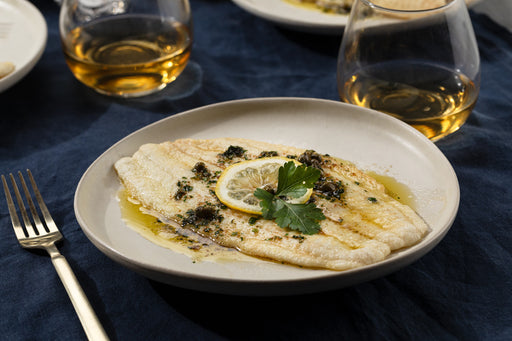
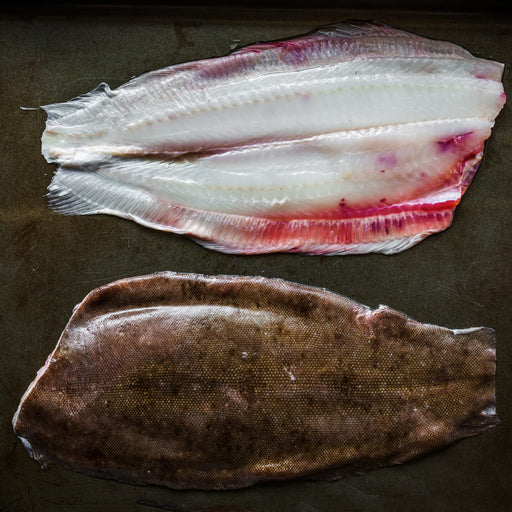


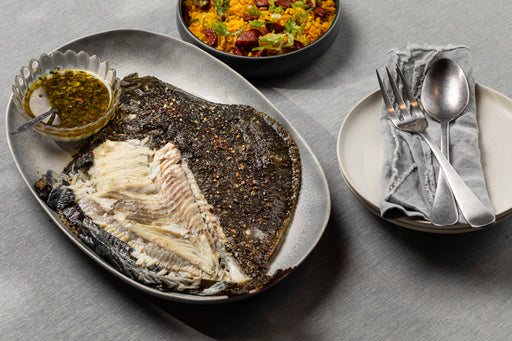
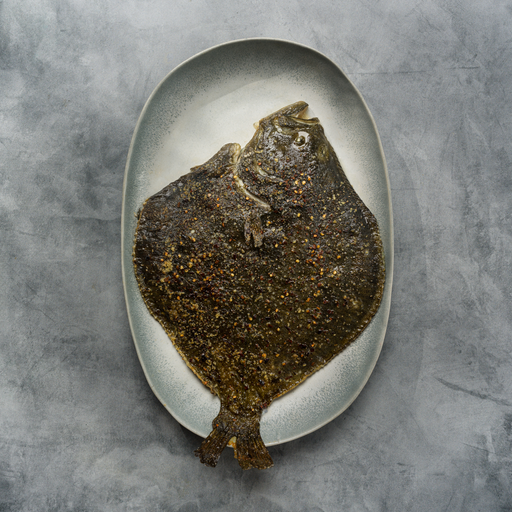


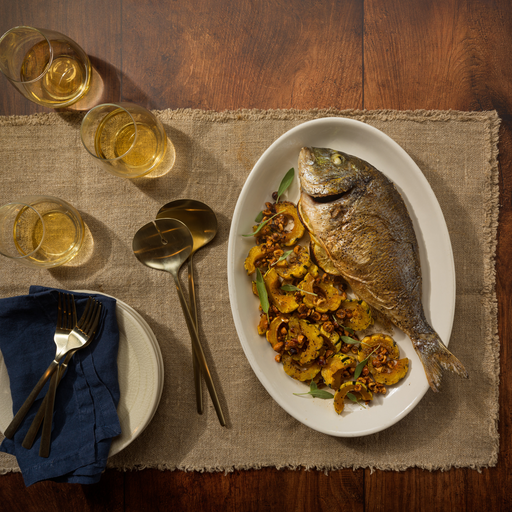
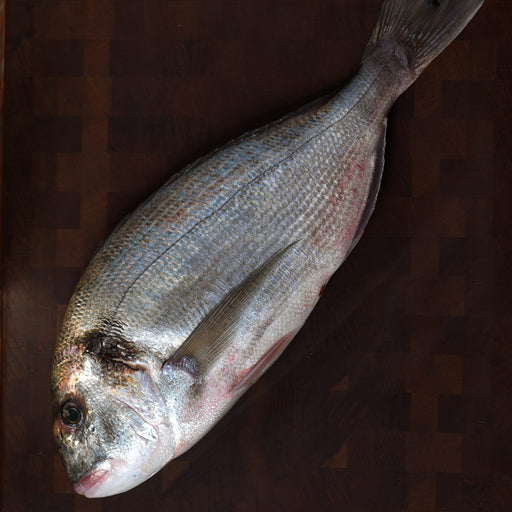
Leave a comment